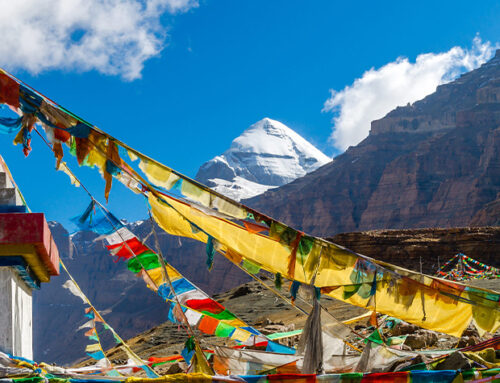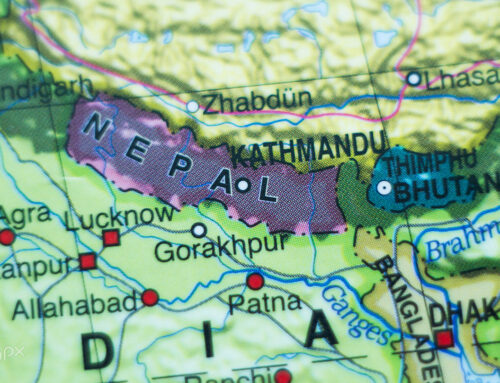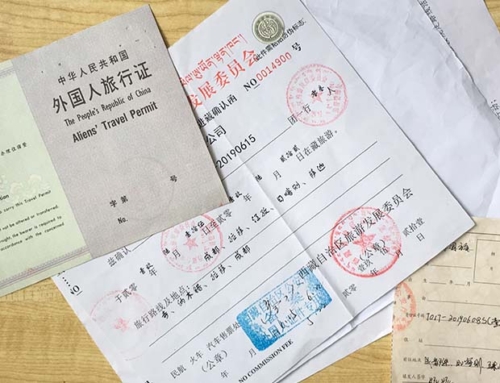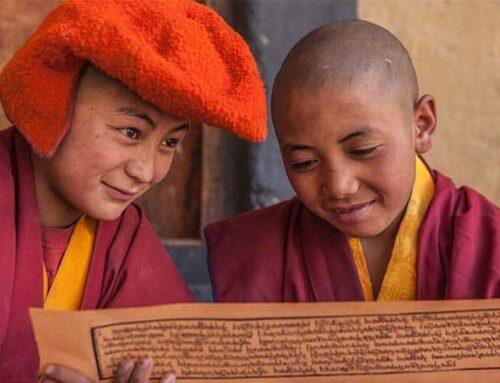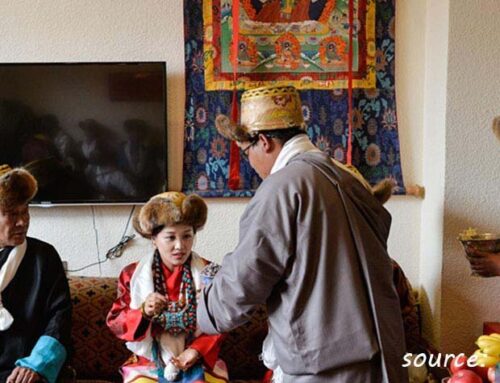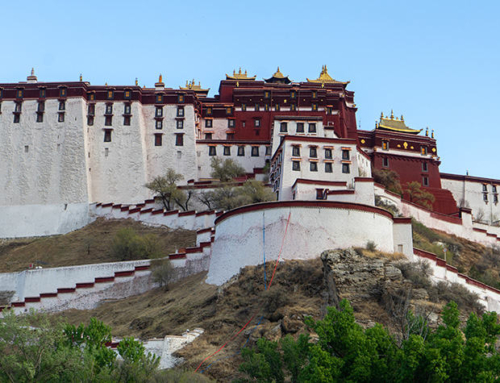Drukpa Kunley. In the annals of Tibetan Buddhist history and spirituality, the figure of Drukpa Kunley stands as a captivating and enigmatic presence. Revered as a saint, a teacher, and even a “crazy yogi,” Drukpa Kunle’s legacy transcends conventional boundaries, weaving together the sacred and the unconventional in a tapestry that has left an indelible mark on the cultural fabric of Tibet.
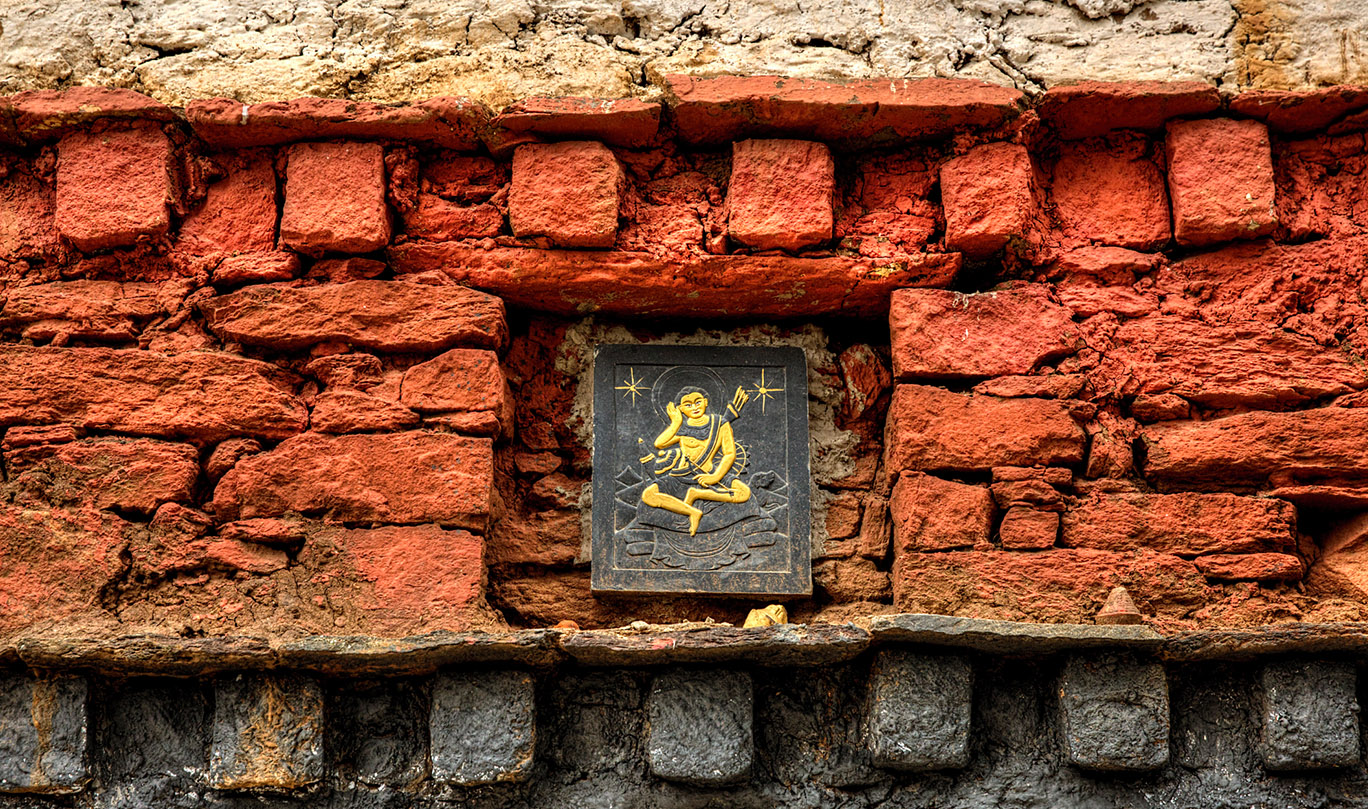
Significance in Tibetan Culture and Spirituality:
Drukpa Kunley is not merely a historical figure; he is a living presence in the hearts and minds of the Tibetan people. His significance extends beyond the boundaries of conventional spiritual teachings, embracing a unique blend of wisdom, unorthodox methods, and a touch of the extraordinary. His teachings resonate with a diverse audience, from devout practitioners seeking spiritual guidance to those captivated by the unconventional aspects of his life.
Tibet, often referred to as the "Land of Snow" is a nation deeply rooted in Buddhist traditions. Amidst the serene landscapes and ancient monasteries, Drukpa Kunle's presence is felt as a transformative force that defies the norms, challenging conventional perceptions of spiritual practice. The Tibetan people revere him not only for his profound teachings but also for the unconventional and sometimes controversial methods through which he imparted wisdom.
Birth, Family Background, and Early Life at Ralung Monastery:
Drukpa Kunley's earthly journey began in the Earth Pig year of 1455, a time when the Ralung Monastery in the Tibetan region of Kyisho bore witness to the birth of a soul destined for a unique path. Born into the noble Gya family, Drukpa Kunle's familial roots traced back to Tsangpa Gyare, the founder of the Drukpa Kagyu tradition. His lineage, intertwined with the threads of Tibetan Buddhism, set the stage for a life that would navigate both spiritual realms and earthly struggles.
The Ralung Monastery, a bastion of the Drukpa Kagyu tradition, became the early backdrop for Drukpa Kunley's formative years. Raised in the midst of spiritual teachings and surrounded by the echoes of his family's historical connections to the monastery, his early life was marked by a blend of serenity and tumult. The Gya family, having controlled the monastery and its estates for three centuries, found themselves entangled in the intricate power struggles that defined the era.
Tragedy struck young Drukpa Kunley with the untimely death of his father, Rinchen Zangpo, when he was just thirteen. The family discord that followed, coupled with political strife, cast a shadow over his formative years. His autobiography reveals the turmoil within the Gya family, pointing fingers at paternal uncles and rival factions, creating an environment of instability and betrayal.
In the midst of familial upheavals, Drukpa Kunley's innate spiritual inclinations began to surface. In his youth, he found solace in playful acts, often masquerading as an ascetic hermit. However, the happiness of his early years was fleeting, overshadowed by the political machinations that would shape his destiny.
As we delve deeper into the life of Drukpa Kunley, we uncover a narrative that goes beyond the conventional spiritual biographies, venturing into the realms of mysticism, unorthodoxy, and the vibrant cultural landscape of Bhutan. His birth and early years at Ralung Monastery set the stage for a journey that would transcend the boundaries of traditional spiritual narratives, leaving an indelible mark on the very essence of Tibetan culture and spirituality.
Lineage and Early Life: The Turbulent Tapestry of Drukpa Kunle's Origins
The roots of Drukpa Kunle's extraordinary life delve deep into the rich soil of Tibetan Buddhism, tracing back through a lineage intricately connected to the illustrious Tsangpa Gyare, the founder of the Drukpa Kagyu tradition. His family, the noble Gya clan, stood as guardians of the Ralung Monastery in the Tibetan region of Kyisho for three centuries, weaving a tapestry of both spiritual heritage and worldly struggles

Ancestral Threads: Tracing the Lineage to Tsangpa Gyare:
Drukpa Kunle's paternal clan, the Gya family, held a position of prominence within the Drukpa Kagyu tradition. The lineage's roots were deeply embedded in the teachings and practices initiated by Tsangpa Gyare (1161-1211), the revered founder of the Drukpa Kagyu tradition. While Tsangpa Gyare himself was a celibate monk without direct offspring, the Gya family traced its descent through Tsangpa Gyare's "middle brother," Lhatsun, from a family of seven children.
The Middle sub-sect of the Drukpa Kagyu, to which Drukpa Kunle belonged, was founded by Tsangpa Gyare's nephew, Wonre Dharma Senge (1177-1237). This intricate web of familial connections not only established Drukpa Kunle's spiritual lineage but also grounded him in a tradition deeply entwined with the origins of the Drukpa Kagyu school.
The Gya family's control over the Ralung Monastery and its extensive estates was a testament to their historical significance within the Drukpa Kagyu tradition. However, as the 15th century dawned, political turmoil and the waning authority of the Pakmodru rulers ushered in a period of instability that would shape the trajectory of Drukpa Kunle's early life.
Political Struggles and Family Discord:
The Gya family found themselves caught in the crossfire of the shifting political landscape. The struggle for power and control over the Drukpa estates unfolded against the backdrop of familial discord and internal strife. Drukpa Kunley, born into this tumultuous period, witnessed firsthand the erosion of his family's authority.
In his autobiography, Drukpa Kunley points accusing fingers at his paternal uncle, accusing him of inciting a faction within the family based in Nel to murder his father, Rinchen Zangpo. The murder, a tragic event that transpired when Drukpa Kunley was just thirteen, cast a long and haunting shadow over his life. It marked the beginning of a series of challenges that would shape his spiritual journey and define his stance towards the political intrigues that engulfed Ralung.
The discord within the Gya family extended beyond mere power struggles. Disinheritance and familial animosities were rampant, painting a picture of internal strife that went beyond the typical dynamics of a noble lineage. Drukpa Kunley's reluctance to immerse himself in the political intrigues of Ralung, a sentiment echoed throughout his life, can be traced back to the wounds inflicted by familial betrayal.
Rinchen Zangpo's Murder: A Pivotal Moment in Drukpa Kunle's Life:
The untimely demise of Drukpa Kunley's father, Rinchen Zangpo, reverberated through the corridors of the Ralung Monastery and echoed in the valleys surrounding Kyisho. The circumstances surrounding Rinchen Zangpo's murder remain shrouded in historical ambiguity, with various accounts pointing to internal family conflicts and power struggles as the catalysts for this tragic event.
The impact of his father's murder on Drukpa Kunley was profound and enduring. At the tender age of thirteen, he found himself thrust into a world of political machinations, familial betrayals, and a struggle for survival. The Gya family, once the custodians of the spiritual legacy at Ralung, now stood divided, fractured by internal strife.
The traumatic events of his early years left an indelible mark on Drukpa Kunley's psyche. It became a driving force behind his reluctance to engage in the political intricacies that characterized the governance of Ralung. The scars of betrayal and loss propelled him towards a spiritual path that sought refuge in the teachings of the Drukpa Kagyu tradition and the profound wisdom imparted by his later mentors.
In unraveling the lineage and early life of Drukpa Kunley, we find a narrative woven with both the threads of spiritual heritage and the stains of earthly turmoil. The Gya family's connection to Tsangpa Gyare, the political struggles of the 15th century, and the tragic murder of his father laid the foundation for a life that would transcend the boundaries of conventional spiritual narratives, ultimately leaving an enduring impact on Tibetan and Bhutanese culture and spirituality.
Rebirth and Spiritual Journey: Drukpa Kunle's Odyssey into the Transcendent Realm
In the mystic realms of Tibetan Buddhism, Drukpa Kunle emerges as a figure not confined to the temporal bounds of a single lifetime. His narrative transcends the earthly realm, intertwining with the esoteric and the extraordinary. As he embarked on his spiritual journey, the recognition of his rebirth as the Indian mahāsiddha Shawaripa marked the commencement of a saga that would blend the profound teachings of his mentors, the winds of spiritual wisdom, and the transformative practices that would become the hallmark of his legacy.
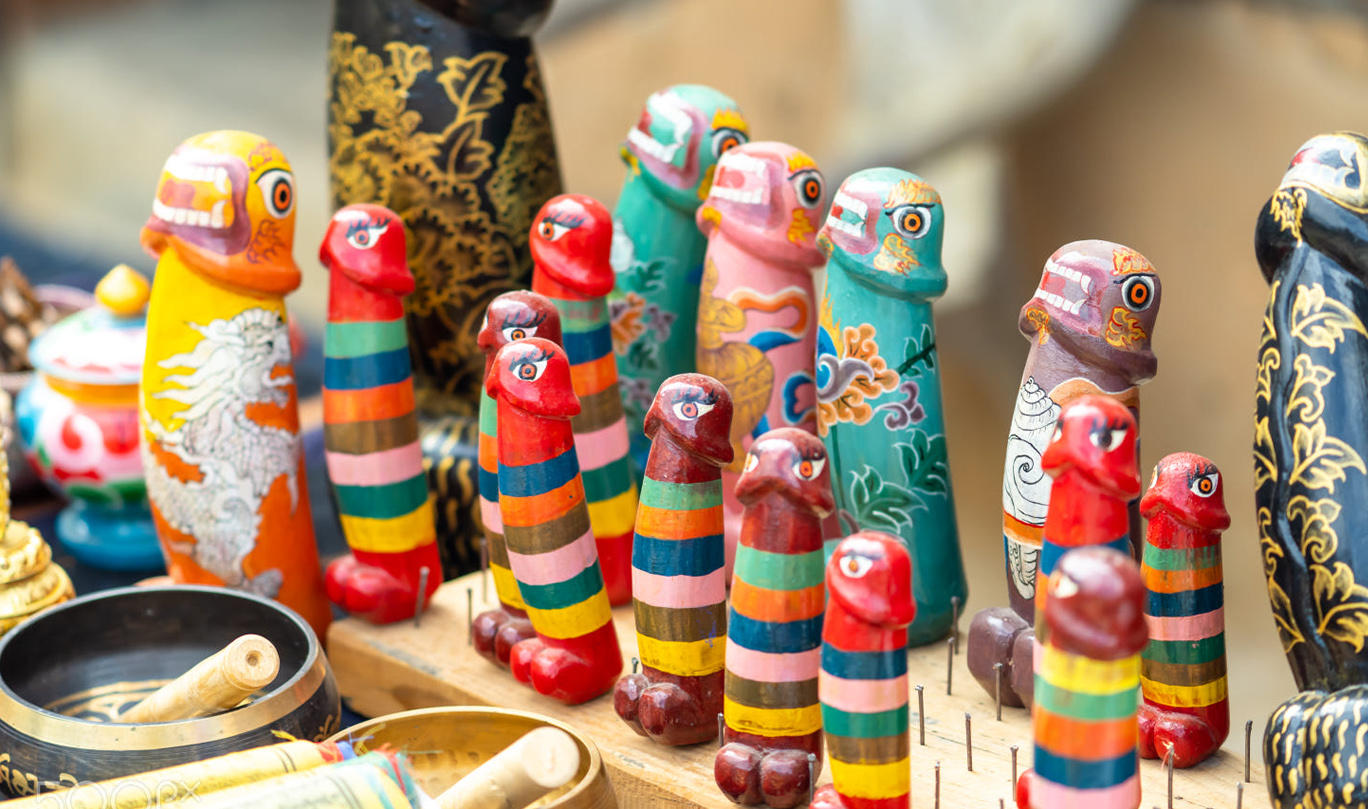
Rebirth as Shawaripa: A Mahāsiddha's Resurgence:
During his own lifetime, Drukpa Kunley boldly declared his identity as the rebirth of Shawaripa, an Indian mahāsiddha known for his unorthodox methods and profound mastery of tantric practices. This attribution, possibly initiated by Drukpa Kunley himself, suggests a connection that transcends the boundaries of conventional understanding. In his autobiography, Drukpa Kunle unabashedly states, "It is also true that I am the rebirth of Shawari Mahesvara, the great siddha, the teacher of emptiness."
Shawaripa, like Drukpa Kunley, was known to lead a hunting dog and carry a bow and arrow. The parallels between the two figures, coupled with Drukpa Kunle's explicit affirmation, fostered the belief in his rebirth as a continuation of Shawaripa's spiritual legacy. This recognition held significance not only in shaping Drukpa Kunley's identity but also in infusing his teachings and practices with the mystical aura associated with the ancient mahāsiddha.
The acknowledgment of Drukpa Kunley as Shawaripa's rebirth introduced a dimension of continuity between spiritual lineages, reinforcing the interconnectedness of realized beings across time and space. As he embraced this identity, Drukpa Kunley stepped into a role that extended beyond the confines of an ordinary monk or teacher; he became a vessel for the resurgence of Shawaripa's profound spiritual energy in a new era.
Mentors on the Path: Lhatsunpa Kunga Chokyi Gyatso and Sonam Chokden:
Drukpa Kunley's spiritual journey was enriched and guided by the wisdom imparted by revered mentors. Foremost among these was Lhatsunpa Kunga Chokyi Gyatso, a master whose teachings became the wellspring of Drukpa Kunley's spiritual insights. Lhatsunpa, born in 1473 and passing away in 1557, became Drukpa Kunley's root teacher, shaping the trajectory of his understanding and practice.
Under the tutelage of Lhatsunpa, Drukpa Kunley delved into the teachings of Dotsa and Nyingpo. These esoteric subjects, left unexplained in historical sources, formed the basis of his initiation into the profound mysteries of the Drukpa Kagyu tradition. Lhatsunpa's guidance laid the groundwork for Drukpa Kunley's deepening understanding of the innermost aspects of the path, preparing him for the transformative journey that lay ahead.
Another significant influence on Drukpa Kunley's spiritual evolution was Sonam Chokden, a master residing in Drakar Choding in Rong. Drakar Choding, the abode of Sonam Chokden, became a sanctum of spiritual revelations where Drukpa Kunle received the complete teachings of Mahāmudrā, a profound meditation technique that unravels the nature of mind itself.
The teachings of Mahāmudrā, transmitted by Sonam Chokden, served as a beacon illuminating the path to ultimate realization. In addition, Drukpa Kunle received the practice instructions for Tummo, a yogic practice associated with inner heat and energy. These teachings, bestowed upon him by Sonam Chokden, became integral components of Drukpa Kunle's spiritual arsenal, enabling him to navigate the subtleties of meditative absorption and inner alchemy.
The presence of these eminent mentors in Drukpa Kunley's life exemplifies the traditional guru-disciple relationship, where the transmission of wisdom transcends mere intellectual discourse, delving into the experiential realms of spiritual awakening. Their influence resonated in every facet of Drukpa Kunle's being, providing him with the necessary tools to navigate the intricate path of Tibetan Buddhism.
Teachings on Dotsa, Nyingpo, Mahāmudrā, and Tummo:
The teachings Drukpa Kunley received on Dotsa and Nyingpo remain veiled in historical obscurity, contributing to the mysterious aura surrounding his spiritual instruction. These profound aspects of the Drukpa Kagyu tradition, transmitted by Lhatsunpa Kunga Chokyi Gyatso, are reflective of the esoteric and deeply transformative nature of Tibetan Buddhist practices.
Drukpa Kunley's immersion in Mahāmudrā, under the guidance of Sonam Chokden, marked a pivotal phase in his spiritual journey. Mahāmudrā, often referred to as the "Great Seal," constitutes a set of meditation techniques aimed at realizing the fundamental nature of mind. Through direct experience and introspection, practitioners traverse the layers of conceptual thought to uncover the inherent clarity and luminosity of consciousness.
In parallel, the teachings on Tummo, the inner heat practice, provided Drukpa Kunley with tools to engage with the subtle energies of the body-mind complex. Tummo, a yogic technique associated with the generation of inner heat, plays a crucial role in the advanced stages of Tibetan Buddhist meditation. It involves the harnessing of internal energy, leading to heightened states of concentration and spiritual insight.
The reception of these teachings set the stage for Drukpa Kunley's immersion into the profound depths of contemplative practice. His encounter with the intricate nuances of Dotsa, Nyingpo, Mahāmudrā, and Tummo not only enriched his own spiritual understanding but also endowed him with the wisdom to guide others on the path to realization.
As Drukpa Kunley embraced the teachings handed down by his mentors, the fabric of his spiritual journey was woven with threads of esoteric knowledge, transformative practices, and a commitment to the profound insights embedded within the Drukpa Kagyu tradition. The recognition of his rebirth as Shawaripa, coupled with the wisdom imparted by his esteemed teachers, propelled him into a realm where the ordinary boundaries of time and existence faded, giving way to the transcendent vistas of spiritual awakening.
Monastic Life and Ordination: Drukpa Kunle's Spiritual Odyssey
The sanctified halls of monastic life beckoned Drukpa Kunley with an allure that transcended the temporal realm. His journey into the folds of monasticism, marked by solemn vows and sacred ordinations, unfolded as a testament to his unwavering commitment to the path of Tibetan Buddhism. As he navigated the intricacies of monastic rituals and affiliations, Drukpa Kunley's presence became synonymous with the harmonious fusion of spiritual devotion and the disciplined life within the monastic enclave.
Monastic Vows and Ordination Ceremonies:
Drukpa Kunley's formal entry into the monastic fold was marked by the undertaking of novice monastic vows, a sacred commitment that signified his dedication to the path of spiritual discipline. The ceremony, a solemn occasion presided over by the abbot of Nenying at Nyingro Menchuka near Gyangtse in South Tibet, witnessed Drukpa Kunley embracing the vows that would shape his monastic journey.
Later, he advanced further along the monastic path by taking full ordination vows. This pivotal moment occurred under the auspices of Khyen Rabpa, a prominent figure from Shalu Monastery, an institution with historical significance in Tibetan Buddhism. The formalization of his commitment to the monastic code was accompanied by the bestowal of the name Kunga Lekpa Peljor Zangpo, signifying his role as a practitioner dedicated to the pursuit of enlightenment.
The adoption of the name Tsewang Gyelpo, bestowed upon him during the ordination, echoed the transformative nature of this juncture in Drukpa Kunley's life. This dual nomenclature encapsulated both the aspirational qualities of enlightenment (Tsewang Gyelpo) and the monk's path to spiritual realization (Kunga Lekpa Peljor Zangpo).
The monastic vows and ordination ceremonies served as foundational rites of passage, encapsulating the essence of Drukpa Kunley's commitment to the monastic life. These rituals marked the inception of a journey that would see him navigate the inner landscapes of the mind and the outer landscapes of Tibetan monastic institutions.
Monastic Affiliations and Roles:
Drukpa Kunley's monastic journey was not confined to the solitary pursuit of enlightenment; it unfolded within the context of significant monastic affiliations and roles. Among these, one notable mention is his tenure as the abbot of Nyel Dreu Le Gon, a position that added a layer of administrative responsibility to his spiritual endeavors.
Nyel Dreu Le Gon, a monastic establishment, found its spiritual leader in the form of Drukpa Kunley. As the abbot, he assumed a central role in guiding the monastic community, overseeing rituals, and imparting the teachings of the Drukpa Kagyu tradition. The responsibilities associated with such a position extended beyond the purely spiritual, encompassing the organizational and administrative aspects of monastic life.
While the specific details of Drukpa Kunle's tenure as the abbot remain somewhat obscured in historical records, the role itself carried inherent significance. It underscored his standing as a respected figure within the monastic hierarchy, entrusted with the welfare of both the institution and its inhabitants.
As Drukpa Kunley navigated the complexities of monastic leadership, his presence radiated a sense of stability and spiritual guidance. The abbatial seat of Nyel Dreu Le Gon became a focal point for the dissemination of Drukpa Kagyu teachings, with Drukpa Kunley at the helm, steering the monastic community through the ebbs and flows of their collective spiritual journey.
Service and Spiritual Exploration:
Drukpa Kunley's monastic life was not confined to the boundaries of a single institution. Instead, he embarked on extensive travels, traversing the landscapes of south-central Tibet and the southern Himalayas. These journeys facilitated encounters with a diverse array of spiritual masters, each contributing to the tapestry of his spiritual education.
Among his teachers, the Seventh Karmapa, Chodrak Gyatso, played a pivotal role. Drukpa Kunley received the transmission of the Profound Inner Meaning (Zab Mo Nang Don), a text composed by the Third Karmapa Rangjung Dorje. This connection to the Karmapa lineage further enriched his spiritual repertoire, underscoring the interconnectedness of the various schools within Tibetan Buddhism.
His explorations extended to pilgrimages in sacred sites such as Tsari, Nenang, Labchi, and Kailash, each pilgrimage infusing his spiritual journey with a tapestry of sacred landscapes and revered destinations.
Conclusion of Monastic Life:
As Drukpa Kunley moved through the realms of monastic life, he embraced the dual role of a spiritual guide and a custodian of monastic traditions. His vows and ordinations became the foundational stones upon which he built a legacy that transcended the conventional boundaries of religious practice.
Family Life and Descendants: Drukpa Kunle's Journey Beyond Monastic Boundaries
n the tapestry of Drukpa Kunle's life, the threads of family, love, and lineage weave a narrative that transcends the monastic confines, revealing a dimension of the renowned Tibetan Buddhist master often veiled in mystique. His decision to relinquish his monastic vows, embrace matrimony, and traverse the realms of familial bonds added a nuanced layer to his multifaceted persona.
A Departure from Monastic Conventions:
The chronicles of Drukpa Kunley's life take an unexpected turn as he confronts the dichotomy between monastic asceticism and the myriad expressions of human experience. At the age of maturity, Drukpa Kunley made a profound decision that would alter the trajectory of his spiritual journey—he returned his monastic vows and embraced a life beyond the traditional monastic path.
This departure from the conventional norms of monasticism, a choice to step into the intricate dance of family life, carried with it a transformative energy. Drukpa Kunley, once ensconced in the tranquility of monastic routine, now embarked on a new odyssey—one that involved the complexities of human relationships, the joys of parenthood, and the responsibilities of a householder.
Wives and Children:
Drukpa Kunley's decision to embrace a life outside the monastic sphere brought him into the realm of familial relationships. He took a wife named Tsewang Dzom, and together they embarked on a journey that blended the sacred and the mundane. The union bore fruit in the form of a son named Shingkyong Drukdrak, an individual whose destiny would become intertwined with the unfolding narrative of Drukpa Kunle's legacy.
In addition to Tsewang Dzom, Bhutanese sources also allude to another wife or consort by the name of Pelzang Buti or Norbu Dzom. This union is said to have resulted in the birth of a son named Ngawang Tendzin. Ngawang Tendzin, in the lineage of Drukpa Kunle, assumes a position of significance, becoming a pivotal figure in the Bhutanese continuation of the Drukpa Kagyu tradition.
While the specific dynamics of Drukpa Kunle's family life remain shrouded in historical ambiguity, the mention of multiple wives and children paints a portrait of a master whose earthly journey embraced the dual facets of spiritual realization and familial bonds.
Lineage of Descendants:
Drukpa Kunley's impact transcends the boundaries of his own lifetime, echoing through the corridors of lineage and descendants. His Bhutanese connection is particularly noteworthy, as it is in this Himalayan kingdom that his legacy finds fertile ground, taking root in the soil of cultural, spiritual, and familial continuity.
Ngawang Tendzin, the son born of Drukpa Kunley's union with Pelzang Buti or Norbu Dzom, assumed a central role in the perpetuation of the Drukpa Kunley lineage. Ngawang Tendzin, recognized as an important figure in Bhutanese spiritual history, became the head of a series of recognized rebirths with their seat at Driulhe. This lineage, marked by a succession of incarnations, held sway over the spiritual landscape of Bhutan, embodying the enduring legacy of Drukpa Kunley.
One notable figure in this lineage was Dorje, a recognized rebirth associated with Drukpa Kunle. Dorje took on the responsibility of editing volumes Ka, Kha, and Ga of Drukpa Kunley's collected works, adding an intellectual and scholarly dimension to the spiritual tapestry woven by his predecessors.
As the lineage unfolded through the generations, it culminated in Gyelse Tendzin Rabgye, a prominent Drukpa hierarch and the fourth temporal ruler of Bhutan. Gyelse Tendzin Rabgye's impact resonated not only in the spiritual realms but also in the governance of Bhutan, underscoring the holistic nature of the Drukpa Kunle lineage.
Today, the legacy of Drukpa Kunley endures through the descendants who continue to carry the torch of his teachings, embodying the principles of the Drukpa Kagyu tradition. The Bhutanese landscape, dotted with monasteries, spiritual centers, and the vibrant expressions of a living tradition, bears witness to the indelible mark left by Drukpa Kunley on the cultural and spiritual canvas of the region.
Continuity Amidst Diversity:
Drukpa Kunley's decision to embrace family life and the subsequent lineage of descendants present a facet of his journey that diverges from the stereotypical image of a solitary yogi in the Himalayan wilderness. The interplay between monastic renunciation and familial commitment mirrors the dynamic interweaving of spiritual ideals and the diverse expressions of human existence.
As his descendants carried forth the mantle of the Drukpa Kunley lineage, they became torchbearers of a spiritual legacy that embraced both the hermit's cave and the bustling household. The continuity of this lineage, marked by recognized rebirths and influential figures, serves as a testament to the enduring impact of a master whose teachings transcended the confines of a single lifetime.
In the Bhutanese landscape, where the echoes of prayer flags dance in the mountain breeze and monasteries cling to the hillsides, the legacy of Drukpa Kunley lives on—a legacy woven not only through the sutras and tantras but also through the intricate tapestry of familial bonds and the unbroken thread of descendants who walk the path illuminated by his timeless wisdom.
Travel and Teachings: Drukpa Kunle's Spiritual Odyssey
Drukpa Kunle's spiritual journey unfolded as a tapestry of travels, teachings, and transformative encounters that spanned the vast landscapes of south-central Tibet and the southern Himalayas. His pilgrimage across sacred terrains, interactions with diverse masters, and the transmission of profound teachings marked a chapter in Tibetan Buddhism that resonates through the ages.
Extensive Travels:
Drukpa Kunley's wanderlust led him on a pilgrimage that crisscrossed the topography of south-central Tibet and the southern Himalayas. The contours of his spiritual sojourn mirrored the undulating landscapes he traversed, from the serene valleys to the majestic mountain ranges that adorned the Tibetan plateau.
During these extensive travels, Drukpa Kunley's quest for spiritual realization took him to remote monasteries, sacred sites, and the abodes of renowned masters. The footprints of his journey left an indelible mark on the Himalayan terrain, creating a network of sacred connections that resonated with the pulse of Tibetan Buddhism.
As he moved from one locale to another, Drukpa Kunley became a living embodiment of the itinerant tradition within Tibetan Buddhism, where the path to enlightenment unfolded not only within the confines of monastic walls but also amidst the vibrant tapestry of the natural world.
Interactions with Various Masters:
The annals of Drukpa Kunley's life are enriched by encounters with a multitude of spiritual masters, each contributing a unique hue to the palette of his spiritual education. Among these, Lhatsunpa Kunga Chokyi Gyatso emerged as a pivotal figure, assuming the role of Drukpa Kunle's root teacher.
Under the guidance of Lhatsunpa, Drukpa Kunley delved into the teachings of Dotsa and Nyingpo. The nuances of these teachings, which are left somewhat enigmatic in historical records, became an integral part of Drukpa Kunle's spiritual arsenal. The master-disciple relationship with Lhatsunpa symbolized the passing of the torch of wisdom from one generation to the next.
Another luminary in Drukpa Kunley's spiritual journey was Sonam Chokden, residing in Drakar Choding in Rong. Under Sonam Chokden's tutelage, Drukpa Kunley received comprehensive teachings on Mahāmudrā, a profound meditative practice that holds a central place in the Kagyu tradition. Additionally, he was initiated into The Six Cycles of One Taste, a treasure teaching concealed by Rechungpa Dorje Drakpa and revealed by Tsangpa Gyare, the founder of the Drukpa Kagyu tradition.
The transmission of these teachings became a sacred pact, linking the spiritual destinies of teacher and disciple. Drukpa Kunley, as a receptacle of ancient wisdom, imbibed the teachings that would shape his own approach to the path of enlightenment.
Pilgrimages and Service as the Abbot:
Drukpa Kunley's journey was not merely a physical pilgrimage but a profound exploration of sacred spaces and spiritual landscapes. His travels included pilgrimages to revered sites such as Tsari, Nenang, Labchi, and the sacred Mount Kailash. Each step on these sacred grounds became a meditation, an act of devotion, and a communion with the numinous forces that imbued these landscapes with spiritual potency.
In addition to his itinerant lifestyle, Drukpa Kunley assumed the mantle of leadership as the abbot of Nyel Dreu Le Gon. This role, while administrative in nature, was infused with spiritual responsibility. The abbatial seat became a nexus where the dual facets of spiritual practice and organizational duties converged.
As the abbot, Drukpa Kunley guided the monastic community, ensuring the seamless orchestration of rituals and ceremonies that form the heartbeat of monastic life. His service in this capacity became an embodiment of leadership rooted in spiritual values—a harmonious blend of contemplation and action.
Despite the administrative duties, Drukpa Kunley's heart remained attuned to the spiritual essence of his journey. Pilgrimages and service as the abbot were not divergent paths but complementary facets of his commitment to the Drukpa Kagyu tradition.
Teaching Beyond Texts:
Drukpa Kunley's teachings transcended the confines of written texts. While his spiritual education encompassed the sutras and tantras, his pedagogy extended beyond the intellectual realm. Oral transmissions, experiential guidance, and the lived example of his own spiritual practice became the medium through which he imparted the essence of Tibetan Buddhism.
One notable interaction in the oral tradition recounts how Drukpa Kunley, with unconventional flair, instructed an old man named Ap Tendzin to recite a refuge mantra filled with lewd words. This seemingly unconventional teaching method, designed to cut through conventional perceptions, led to a transformative experience for Ap Tendzin. The subsequent manifestation of a sphere of rainbow light bore testament to the efficacy of Drukpa Kunley's unorthodox yet potent teaching methods.
His teachings were not confined to the serene ambiance of monastic halls; they permeated the everyday lives of the people. Whether subduing demons, transforming demonesses into protectors of the Buddhadharma, or engaging in activities that defied conventional norms, Drukpa Kunley's teachings were imbued with a dynamic and transformative energy.
Conclusion: A Spiritual Odyssey Unfurls:
Drukpa Kunley's journey, marked by travels, encounters, and teachings, unfolded as a spiritual odyssey that resonates through the corridors of Tibetan Buddhism. His footsteps, imprinted on the sacred soil of the Himalayas, echo the dynamic interplay between the inner realms of contemplation and the outer landscapes of pilgrimage.
Through interactions with diverse masters, pilgrimages to revered sites, and service as the abbot, Drukpa Kunley wove a tapestry of spiritual exploration that transcends the boundaries of time. His teachings, transmitted through both conventional methods and unconventional means, embody the living tradition of Tibetan Buddhism—one that pulsates with the vibrancy of experiential wisdom and the sacred dance of enlightened realization. The spiritual odyssey of Drukpa Kunley, with its echoes of teachings and footprints on sacred soil, invites contemporary seekers to traverse the same timeless path toward the luminous peaks of enlightenment.
Cultural Impact and Iconography: Drukpa Kunle's Enduring Presence in Bhutanese Consciousness
Drukpa Kunley, a luminary in the annals of Tibetan Buddhism, transcends the confines of monastic traditions to become a vibrant thread in the rich tapestry of Bhutanese culture and spirituality. His impact, both tangible and symbolic, reverberates through the valleys and monasteries, weaving its way into the very fabric of Bhutanese consciousness.
Drukpa Kunley: A Cultural Pillar in Bhutan:
Bhutan, nestled in the embrace of the Eastern Himalayas, carries within its landscapes the echoes of spiritual traditions that have shaped its cultural identity. Drukpa Kunley, with his unorthodox methods and profound teachings, has left an indelible mark on Bhutanese culture, becoming a revered figure whose influence extends beyond the confines of monastic walls.
Spiritual Patronage:
Drukpa Kunle is venerated as a spiritual patron in Bhutan, where his teachings have become a guiding light for countless practitioners. The Bhutanese people, known for their deep-rooted spirituality, have embraced Drukpa Kunley as a guardian of the Buddhadharma. Monasteries echo with chants that carry the resonance of his name, and pilgrims seek solace in the sacred sites associated with his transformative journey.
Local Folklore and Tales:
The oral tradition in Bhutan is rich with tales of Drukpa Kunley's unconventional methods and miraculous deeds. Beyond the solemnity of written scriptures, his stories are narrated with a touch of humor and awe, creating a cultural ambiance where spirituality intertwines with the vivid hues of human experience. These tales, passed down through generations, contribute to the living mythology of Drukpa Kunley.
Symbolic Imagery: The Phallus and its Cultural Significance:
One of the most striking elements associated with Drukpa Kunley is the presence of phallic symbols, both painted on the walls of homes and suspended as "flying phalluses" from eaves. This imagery, while raising eyebrows in some cultural contexts, holds a unique and culturally significant place in Bhutanese tradition.
Phallic Imagery in Bhutan: The origins of phallic imagery in Bhutan predate Drukpa Kunley, with a history entwined in ancient animistic traditions. In Bhutanese folk culture, the phallus is considered a symbol of fertility, prosperity, and warding off evil spirits. Drukpa Kunley's association with this imagery, however, adds a layer of spiritual significance that goes beyond the conventional.
Drukpa Kunley and Phallic Symbolism: Drukpa Kunley's unorthodox methods, including his use of lewd language and unconventional teachings, are said to have included practices that involved the phallic symbol. However, the interpretation of these practices extends beyond the literal and ventures into the realm of symbolic transformation.
In Bhutanese culture, the phallus represents not merely the physical aspect of procreation but also the spiritual energy associated with creation and abundance. Drukpa Kunley, in his teachings and deeds, is believed to have harnessed this symbolic potency, transmuting the mundane into the sacred. The phallus, under his influence, becomes a conduit for spiritual realization, a reminder of the inseparability of the sacred and the profane.
Chimi Lhakang: A Temple of Fertility and Transformation:
A tangible manifestation of Drukpa Kunley's impact on Bhutanese culture is the Chimi Lhakang, a temple in the Punakha valley near the village of Lobeysa. According to local lore, Drukpa Kunley subdued a ferocious demoness in this location, transforming her into a black dog buried beneath a stupa. The temple, considered a testament to his miraculous deeds, has become a pilgrimage site with its own unique rituals.
Fertility Blessings: Chimi Lhakang is renowned as a fertility site where infertile women from different countries come to seek blessings. The rituals performed at the temple involve receiving blessings on the head from a large wooden phallus and Drukpa Kunley's bow and arrows. The phallus, in this context, becomes a symbol of the transformative power of fertility, embodying the continuity of life and the sacred thread that connects generations.
Cultural Continuity: The rituals at Chimi Lhakang and the prevalence of phallic symbols in Bhutanese culture exemplify the dynamic interplay between spirituality and cultural continuity. Drukpa Kunley, as a catalyst for these practices, becomes a bridge between the esoteric realms of Tibetan Buddhism and the lived experiences of Bhutanese people.
The Dichotomy of Perception:
Drukpa Kunley's cultural impact, especially in the realm of phallic symbolism, invites a nuanced exploration of perception. In a world where cultural interpretations vary, the Bhutanese embrace of these symbols challenges preconceived notions and beckons observers to delve into the cultural depth of their significance.
For the Bhutanese, the phallus is not merely a symbol; it is a living expression of a cultural ethos that celebrates life, fertility, and spiritual transformation. Drukpa Kunley, in his unconventional teachings and symbolic practices, serves as a catalyst for this cultural expression, inviting contemplation on the fluid boundaries between the sacred and the cultural.
Legacy Beyond Monastic Walls:
Drukpa Kunley's cultural impact in Bhutan transcends the confines of monastic tradition, extending into the daily lives, folklore, and rituals of the Bhutanese people. The fusion of spirituality with cultural symbols, notably the phallus, creates a unique tapestry that reflects the resilience of tradition in the face of changing times.
As Bhutan navigates the interplay between tradition and modernity, Drukpa Kunley's legacy stands as a testament to the enduring power of spiritual teachings to permeate the very fabric of cultural identity. The phallus, once a symbol of fertility and abundance, becomes a conduit for spiritual transformation under the influence of a master whose impact extends far beyond the walls of monasteries—a master who continues to shape the cultural landscape of Bhutan
The "Mad Yogin" Tradition: Drukpa Kunle and the Unconventional Path to Enlightenment
Drukpa Kunle, ensconced within the annals of Tibetan Buddhism, finds his place among the luminaries of the "mad yogin" tradition—an unconventional stream where enlightenment is pursued through unorthodox methods, eccentric behavior, and a departure from societal norms. This exploration delves into Drukpa Kunle's association with this tradition, draws comparisons with contemporaries like Tsangnyon Heruka and Unyon Kunga Zangpo, and unveils the unique teaching methods attributed to the "Crazy Yogi" of the Drukpa lineage.
Drukpa Kunle and the Mad Yogin Tradition:
The "mad yogin" tradition, known as "nyonpa" in Tibetan, represents a distinctive path to enlightenment that defies conventional expectations and challenges societal norms. Practitioners of this tradition, colloquially termed "crazy yogis," employ unconventional methods to dismantle the barriers of dualistic thinking and propel themselves toward a direct realization of ultimate reality.
Drukpa Kunle, with his unbridled eccentricities and iconoclastic approach to spiritual practice, aligns seamlessly with the ethos of the mad yogin tradition. His teachings, often couched in lewd language and unconventional practices, aim not only to shock the conventional mind but to dismantle the conceptual frameworks that bind individuals to mundane perceptions.
The mad yogin tradition, with its roots in the Mahāmudrā and Dzogchen traditions, seeks a direct experiential realization of the nature of mind and reality. Drukpa Kunle's unorthodox methods become a vehicle for cutting through the veils of conceptualization, allowing practitioners to perceive the inherent luminosity and non-dual nature of existence.
Comparisons with Tsangnyon Heruka and Unyon Kunga Zangpo:
Drukpa Kunle shares the mantle of the mad yogin tradition with contemporaries who, like him, navigated the uncharted territories of spiritual awakening with eccentric flair. Tsangnyon Heruka (1452-1507) and Unyon Kunga Zangpo (1458-1532), known as the "madmen of Tsang and U" respectively, form a triad of unconventional practitioners who challenged societal norms on their path to enlightenment.
Tsangnyon Heruka:
Tsangnyon Heruka, a contemporary of Drukpa Kunle, was recognized for his audacious behavior and radical approach to spiritual practice. Renowned for his poetic compositions and vivid descriptions of visionary experiences, Tsangnyon Heruka left an indelible mark on the Tibetan cultural landscape. His eccentricities mirrored the essence of the mad yogin tradition, embodying a radical departure from societal expectations.
Unyon Kunga Zangpo:
Unyon Kunga Zangpo, hailing from the region of U, was a fellow disciple of Drukpa Kunle's main teachers, the Seventh Karmapa and Kunga Peljor. His unorthodox methods and unconventional behavior aligned with the ethos of the mad yogin tradition. The trio of Tsangnyon Heruka, Unyon Kunga Zangpo, and Drukpa Kunle, while hailing from different regions, converged in their commitment to a path that transcended the boundaries of conventional religious practices.
The common thread among these mad yogins lies in their shared commitment to the direct realization of truth, unencumbered by societal expectations or the trappings of conventional religious decorum. Their unconventional approach, while raising eyebrows in conservative circles, became a powerful vehicle for transmitting the essence of Mahāmudrā and Dzogchen teachings.
Drukpa Kunley's Unique Teaching Methods:
Drukpa Kunle's teaching methods, often characterized by their shock value, carry the imprints of the mad yogin tradition. His unorthodox approach aimed not only at conveying profound spiritual truths but also at dismantling the structures of dualistic thinking that shackle individuals to mundane perceptions.
Refuge Mantra Teaching:
One notable example is the teaching involving a refuge mantra filled with lewd words, imparted to an old man named Ap Tendzin. Instructing him to repeat the mantra loudly at all times, Drukpa Kunle orchestrated a scenario where the conventional boundaries of decency were deliberately crossed. The ensuing embarrassment experienced by Ap Tendzin's family became a catalyst for a profound spiritual revelation.
The teaching, while appearing unconventional, aimed at disrupting the ordinary patterns of conceptualization and morality. In the mad yogin tradition, breaking through societal norms becomes a means of jolting individuals into a direct confrontation with the nature of reality. The sphere of rainbow light witnessed by Ap Tendzin's daughter symbolized the transformative potential embedded in Drukpa Kunle's seemingly eccentric methods.
Demon Subjugation and Transformation:
Drukpa Kunley's reputation as a demon subjugator is another facet of his unique teaching methods. The tale of transforming a ferocious demoness into a black dog at the Chimi Lhakang exemplifies this aspect. By wielding what he termed as the "magic thunderbolt of wisdom," Drukpa Kunley demonstrated the alchemical potential of his spiritual prowess.
This method, rooted in symbolic transformation, mirrors the core tenets of the mad yogin tradition. The demons and demonesses, representing the unruly aspects of the mind, are not annihilated but harnessed and transmuted into protectors of the Buddhadharma. Drukpa Kunle's actions, while shrouded in mythic imagery, carry the nuanced message of inner transformation and the alchemy of spiritual realization.
Eccentricity as a Gateway to Enlightenment:
Drukpa Kunley's journey within the "mad yogin" tradition embodies a radical approach to enlightenment. His life, teachings, and unorthodox methods challenge the very fabric of societal norms and established conventions, inviting followers to question preconceived notions and embark on a path of unbridled wisdom.
As we delve into the "mad yogin" tradition, exemplified by Drukpa Kunle and his counterparts, we encounter a dynamic expression of spiritual realization—one that refuses to be confined by the ordinary, embraces the extraordinary, and navigates the terrain of unconventional wisdom with audacious fervor. In the unorthodox, the "mad yogins" find a portal to the ineffable, beckoning seekers to transcend the limitations of the known and venture into the wild landscapes of uncharted enlightenment.
Legacy and Death: Miracles, Relics, and the Eternal Presence of Drukpa Kunley
The culmination of Drukpa Kunley's earthly journey was not marked by the ordinary passage from life to death. Instead, it unfolded as a series of extraordinary events, surrounded by miracles that etched his legacy deep into the spiritual consciousness of those touched by his teachings. The legacy of Drukpa Kunley extends beyond the confines of his mortal existence, resonating through miracles associated with his death, the distribution of relics, and the enduring belief in his eternal presence.
Miracles Woven into the Tapestry of Departure:
Drukpa Kunley's departure from the mortal realm was accompanied by a tapestry of miracles, each thread weaving a narrative of transcendence and divine intervention. One such miracle, often recounted in oral traditions, speaks of his foot being pierced with a five-colored rainbow as he rode toward Nagartse. This symbolic event transcends the mundane, pointing to a reality beyond the ordinary human experience—a reality where the boundaries between the celestial and terrestrial blur.
Another miraculous occurrence was the appearance of rainbow lights in the winter sky after Drukpa Kunley's passing. In a season where the earth typically rests beneath a blanket of snow, the iridescence of the lights defied natural expectations. These miracles, far from being mere supernatural displays, carry profound symbolic significance within the context of Tibetan Buddhist cosmology—a language of symbols that speaks directly to the heart of the faithful.
Distribution of Relics: Sacred Remnants of Spiritual Mastery:
In the aftermath of Drukpa Kunley's passing, the tangible remnants left behind took the form of relics—sacred artifacts imbued with the spiritual essence of the departed master. The distribution of these relics became a sacred responsibility, overseen by Drukpa Kunley's son and primary disciple, Zhingkyong Drukdrak.
Among the relics were statues representing the divine triumvirate of Śākyamuni, Avalokiteśvara, and Tārā. Each statue, carefully wrapped in silk, found its place within a large silver reliquary stupa in Lampar Monastery in Tolung. This reliquary, adorned with symbols of sacred geometry and ritualistic significance, became a locus of veneration—a tangible reminder of the spiritual mastery embodied by Drukpa Kunley.
The relics, while serving as objects of devotion, also carry a deeper symbolism within the Tibetan Buddhist tradition. They represent the transmutation of the physical into the spiritual—a process wherein the ordinary becomes a vessel for the extraordinary. As pilgrims and practitioners pay homage to these relics, they partake in a sacred communion with the spiritual legacy of Drukpa Kunley.
Residence in the Jokhang Temple: Bhutanese Oral Tradition:
The tapestry of Drukpa Kunley's legacy extends far beyond the geographical boundaries of his earthly sojourn. Bhutanese oral traditions, infused with the rich nuances of folklore and spirituality, weave a narrative that transcends time and space. One such belief, firmly rooted in the collective consciousness of Bhutanese culture, claims that Drukpa Kunley did not experience a conventional death.
According to this oral tradition, for the benefit of beings, Drukpa Kunley chose not to leave this realm entirely. Instead, it is believed that he sent his consciousness to the Jokhang Temple in Lhasa. This sacred pilgrimage site, enshrining the Jowo Śākyamuni statue, is considered one of the holiest in Tibetan Buddhism. The belief goes that Drukpa Kunley's consciousness entered into the side of the Jowo Śākyamuni statue, where he continues to reside—an eternal presence awaiting the opportune moment to return for the benefit of sentient beings.
This belief, while existing within the realm of oral tradition and devotional narratives, holds profound significance for those who look to Drukpa Kunley as a guiding light on their spiritual journey. The Jokhang Temple, already a revered site, becomes a locus of connection with a master who, in choosing to remain in a state beyond conventional death, embodies the timeless nature of enlightenment.
The Unfading Radiance of Spiritual Mastery:
Drukpa Kunley's legacy, marked by miracles, relics, and the enduring belief in his residence in the Jokhang Temple, transcends the temporal confines of mortal life. The miracles associated with his death serve as luminous markers, illuminating a path that stretches beyond the ordinary into the realm of the extraordinary.
The relics, carefully preserved and venerated, stand as conduits for a sacred communion with the spiritual essence of Drukpa Kunley. Pilgrims and practitioners, drawn by the magnetic pull of his legacy, find solace in the tangible remnants that embody the mastery of a yogi who embraced the unconventional path to enlightenment.
The oral tradition claiming Drukpa Kunle's residence in the Jokhang Temple adds a layer of mysticism to his enduring presence. In the collective imagination of those who revere him, Drukpa Kunley becomes more than a historical figure; he becomes a timeless guide, an eternal presence awaiting the auspicious moment to return and illuminate the path of enlightenment for all beings. The legacy of Drukpa Kunley, woven with threads of miracles and devotion, stands as an invitation to traverse the realms of the extraordinary and discover the unfading radiance of spiritual mastery.
Conclusion: Drukpa Kunle's Timeless Legacy and Spiritual Illumination
In the tapestry of Tibetan Buddhism, Drukpa Kunley emerges as a luminary whose life, teachings, and cultural impact have left an indelible mark on the spiritual landscape, particularly in Bhutan. His unconventional path, characterized by eccentricities and miracles, transcended the ordinary, inviting seekers to navigate the extraordinary realms of spiritual realization.
Drukpa Kunley's lineage, traced back to Tsangpa Gyare, weaves a narrative of spiritual heritage. The political struggles and family discord during his early years, culminating in his father's tragic murder, became crucibles shaping his unwavering commitment to the dharma.
Recognized as the rebirth of the Indian mahāsiddha Shawaripa, Drukpa Kunley's spiritual journey unfolded under the guidance of esteemed masters like Lhatsunpa Kunga Chokyi Gyatso and Sonam Chokden. His teachings on Dotsa, Nyingpo, Mahāmudrā, and Tummo echoed the profundity of direct realization, challenging disciples to move beyond mere recitation to embrace meditative experience.
Monastic life and ordination marked pivotal phases, but Drukpa Kunley's decision to return his vows and take a wife reflected a profound understanding of the transformative potential within worldly experiences. His descendants, especially in Bhutan, became torchbearers of his lineage, ensuring the continuity of his spiritual legacy.
Drukpa Kunley's extensive travels, interactions with diverse masters, and service as the abbot of Nyel Dreu Le Gon showcased a dynamic engagement with the spiritual landscape. His cultural impact, manifested through symbolic imagery like phallic symbols, blended erudition with the vibrant tapestry of Bhutanese spirituality.
As a torchbearer of the "Mad Yogin" tradition, Drukpa Kunle's unconventional methods challenged the normative boundaries of spiritual discourse. His comparison with contemporaries like Tsangnyon Heruka and Unyon Kunga Zangpo underscores the uniqueness of his teaching methods and the profound impact on those who embraced his wisdom.
Miracles surrounding his death, the distribution of relics, and the belief in his eternal residence in the Jokhang Temple add layers of mysticism to Drukpa Kunley's enduring legacy. Beyond temporal confines, his teachings continue to resonate, offering seekers a timeless guide on the path to enlightenment.
In the luminosity of Drukpa Kunley's legacy, Bhutanese spirituality finds a guiding star—a presence that transcends time, inviting all who seek illumination to walk the extraordinary path he so boldly tread.

